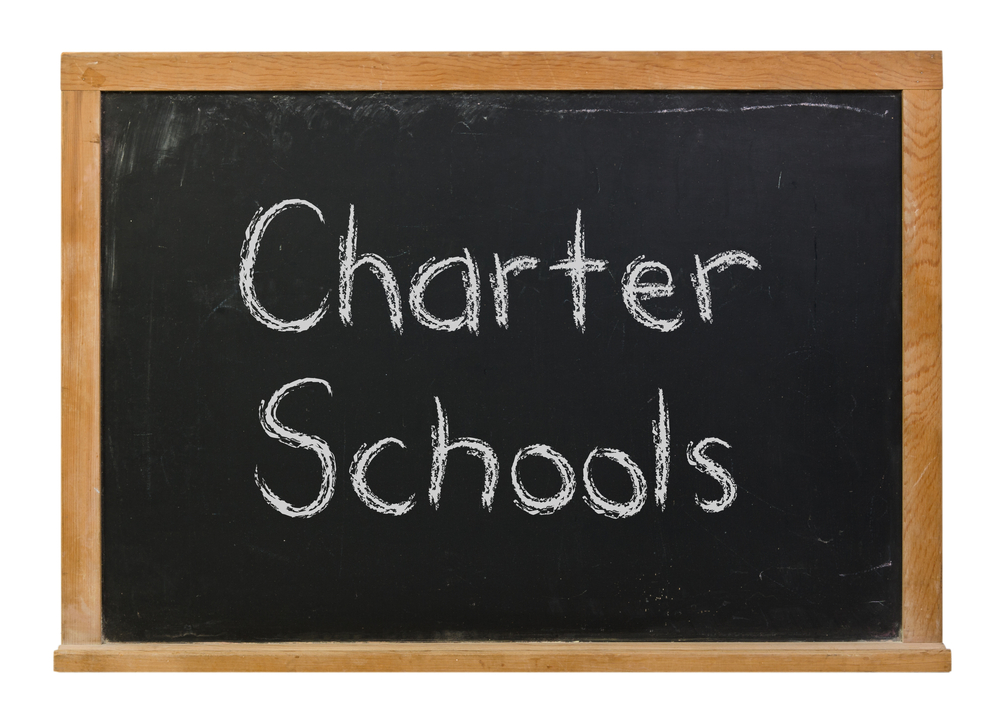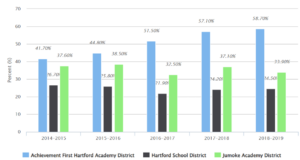“In a realm where educational failure has long been the norm — schools in low-income minority neighborhoods — this is success, a remarkable success. What is equally remarkable is how unwelcome this success has been in many places.” – Thomas Sowell, “Charter Schools and Their Enemies”
Charter schools in Connecticut have faced intense opposition over the last decade. In 2015, a law passed that changed a charter school’s approval process from a one-step to a two-step system, making the process longer and more strenuous. Instead of only receiving approval from the State Board of Education, charter schools must also obtain funding from state lawmakers.
According to the National Alliance for Public Charter Schools, “Connecticut’s law contains significant restrictions on growth and provides inadequate autonomy, insufficient accountability, and inequitable funding to public charter schools.”
Since the law’s inception, no new charter schools have opened despite prevalent demand. Until recently, there had been four charter schools awaiting funding — some of which waiting for over five years.
Charter VS Public Schools
Over 11,000 students currently attend the 21 charter schools throughout the state. Of that population, 94 percent are students of color and 62 percent are from low-income households.
These minority and low-income students are found to substantially outperform their public educated cohort in academic testing. Data from the 2021-2022 school year shows that 95 percent of Connecticut charter schools exceeded their local districts in English and Language Arts (ELA) while 90 percent of them surpassed the same districts in mathematics.
The Department of Education provides more evidence in support of these facts. When comparing educational attainment from the two types of schools in the same region, it is found that charter schools consistently surpass their competition throughout the years. Take Hartford, for example:
This graph is a visual representation of the percentage of students who met or exceeded the Smarter Balance Assessment Consortium (SBAC) testing standards in the subject area of ELA. It concludes that students from both Achievement First and Jumoke Academy regularly outperform their local school district.
Education isn’t the only aspect where charter schools have a leg up on the competition. In the aforementioned schools, the charters experienced a far less amount of violent or disruptive behavior. In the 2019-2020 school year, Hartford school district had 3,649 fighting and battery incidents whereas the other two schools had a combined total of 24 — a figure 152 times smaller.
One of the most significant positive externalities of the integration of charter schools in our state has been the fact that they have, in some instances, been able to achieve the longtime goal of many — close the racial and socioeconomic education gap. In 2017, the Stamford Charter School for Excellence — a school with 98 percent minority student enrolment and 62 percent low-income enrolment — had 93.9 percent of their pupils meet or exceed the SBAC standards in math. Meanwhile, the Greenwich school district only had 71.4 percent of students achieve the same standards.
These results found in Connecticut aren’t an anomaly. A group of MIT economists conducted a study on charter schools in Massachusetts. They concluded:
“Our results show that urban charter schools boost achievement well beyond ambient non-charter levels (that is, the average achievement level for urban non-charter students), and beyond non-urban achievement in math.”
Why is this success so unwelcome in Connecticut when you have uniform outcomes such as these?
Economics of Education
Generally, public schools operate as a monopoly within their district. Taxpayers are often powerless on where they can send their children to school, therefore granting the local classrooms an abundant supply of students. With no competition, the educational market naturally gives way to inadequate results and complacency toward producing impactful outcomes. However, in a district that has a charter school, parents have a choice and with that, the power to send vital resources where their kids attend. Schools, after all, are businesses like any other — and this threat of allocating funds to charters is a reality most districts don’t want to face.
Many economists support competition in markets due to its ability to ease prices, induce research and development, and produce high quality output. If we understand the importance of this in other markets, why not support it in the one that educates our children?
By instituting law that “contains significant restrictions on growth” and failing to financially support local charter schools, the state of Connecticut is choosing a monopolistic market over one that has proven to produce superior results.


